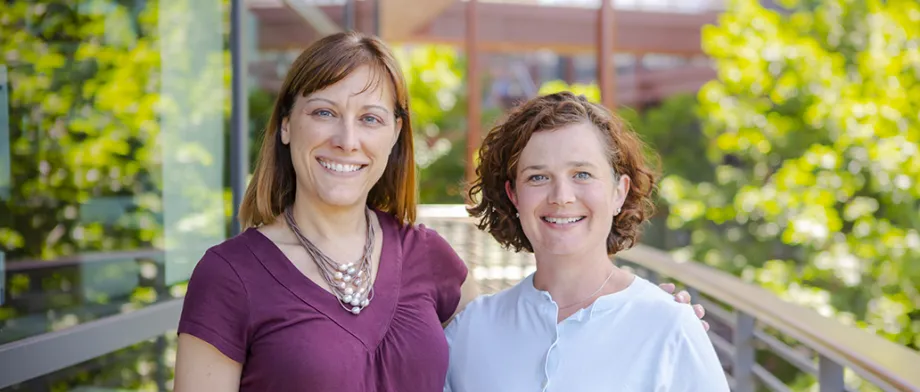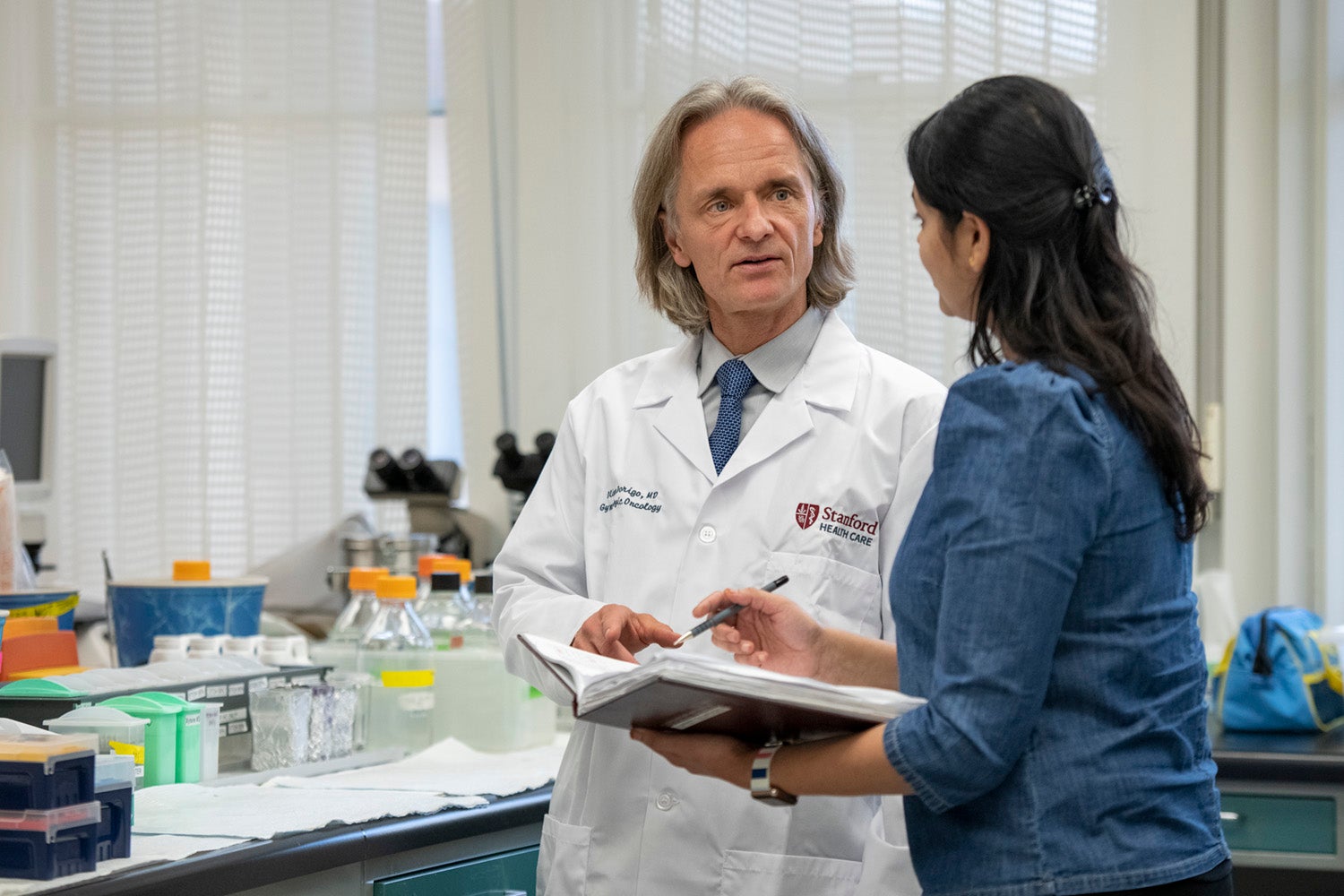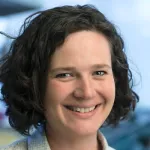
Dr. Sarah Heilshorn (left) and Dr. Erinn Rankin (right).
Stanford News - November 29th, 2018 - by Nathan Collins
As if a cancer diagnosis isn’t bad enough, women with one of the most common forms of ovarian cancer face a hard reality. By the time they get the news, the cancer has likely already spread, and the drugs doctors use to fight back will likely stop working within just a few years.

Annika Enejder, Erinn Rankin and Sarah Heilshorn use a specialized microscope to study ovarian cancer. (Image credit: L.A. Cicero)
The five-year survival rate for women with this cancer, known as high-grade serous ovarian cancer, is just 30 percent.
“High-grade serous ovarian cancer is a devastating disease,” said Erinn Rankin, an assistant professor of obstetrics and gynecology and of radiation oncology.
But now, Rankin, Sarah Heilshorn, an associate professor of materials science and engineering, and Oliver Dorigo, an associate professor of obstetrics and gynecology, are teaming up to take a fresh look at the problem. With the help of a seed grant from Stanford Bio-X, they’ll use new imaging techniques, mouse studies and studies of women with ovarian cancer to better understand how tumors interact with their environments, in the hope that the work could, one day, help doctors thwart one of their deadliest foes.
Ovarian cancer’s challenge
High-grade serous ovarian cancer is responsible for around three-quarters of ovarian cancer deaths, and it is the most aggressive and hard to treat form of the disease. Partly, that’s because it is usually detected relatively late. In 70 percent of women who get the diagnosis, cancer cells have already spread to the stomach, intestines, liver and other abdominal organs by the time symptoms have emerged and doctors figure out what’s going on.
But there’s another, more befuddling problem. At first, women with high-grade serous ovarian cancer often respond well to surgery and chemotherapy, but about 80 percent of the time, follow-up chemotherapy stops working and the cancer returns – and no one understands why.
“We’ve done decades of research on chemoresistance in ovarian cancer, and none of that research has actually led to anything clinically useful,” Rankin said.
Artificial tissues to study real human cells
Rankin, Heilshorn and Dorigo’s long-run aim is to change that, and to do so, they are also changing their starting point. Rather than focus on ovarian cancer cells and tumors themselves, as most researchers had done, they’re looking at how tumors interact with their environments, down to the scale of individual cells and molecules.

Project collaborator Oliver Dorigo, an associate professor of obstetrics and gynecology, works with Supreeti Tallapragada, a life science research professional in his lab. (Image credit: L.A. Cicero)
A growing body of research suggests that those interactions are key to understanding how a variety of cancers metastasize and develop chemoresistance, yet exactly how that plays out in ovarian cancer is unclear. One clue, Rankin said, is that ovarian cancer cells appear to reshape the main ingredient, collagen, in surrounding connective tissues. That might aid chemoresistance, but to dig deeper and understand how would take some new techniques.
That’s where Heilshorn first came in. Her expertise is in developing biogels, materials that mimic biological tissues that can be tuned to study how certain properties – a tissue’s stiffness, for example – affect cell growth. Rankin and Heilshorn figured they could apply that work to study how such properties might affect the way that ovarian cancer spreads.
A new way to see cancer in action
That initial idea sparked another. Heilshorn had been working with Annika Enejder, now an adjunct professor of materials science and engineering in Heilshorn’s lab. Enejder trained as an atomic physicist and has been working for years to develop biomedical applications of a specialized microscope ordinarily used by chemists to study molecular structures and vibrations. As it happens, that technique requires much less energy than other methods to produce a detailed picture of molecular structures – meaning it could be used to study living cells without damaging them or otherwise interfering in their function.
This, then, is the plan: Take tissue samples from women with high-grade serous ovarian cancer and deliver them across campus to Heilshorn’s lab, where they’ll use Enejder’s microscope to watch cancer cells as they grow and interact with a variety of different human tissue-like materials. Doing so, the team hopes, will reveal a deeper understanding of how the cancer spreads and, down the road, give researchers new clues about how to treat the disease.
None of that is to say that new ovarian cancer treatments are right around the corner. The team has only just begun their work, and even if they eventually make an important discovery about how ovarian cancer works, turning that into a treatment is far from a sure thing. It would be a success, Heilshorn said, if in a year they could simply generate some new hypotheses about how ovarian cancer metastasizes and some ideas about how to test them more precisely.
In the meantime, the researchers said, they’re excited to take an entirely new approach to tackling a serious health problem. “We’re here with this collaborative group, and we’re trying to understand ovarian cancer progression and resistance to find new therapies,” Rankin said. “We’re really excited about it.”
Rankin is a member of Stanford Bio-X, the Maternal and Child Health Research Institute and the Stanford Cancer Institute. Heilshorn is a member of Bio-X, the Cardiovascular Institute, the Child Health Research Institute, the Precourt Institute for Energy, Stanford ChEM-H, and the Wu Tsai Neurosciences Institute. Dorigo is a member of Bio-X and the Stanford Cancer Institute.



